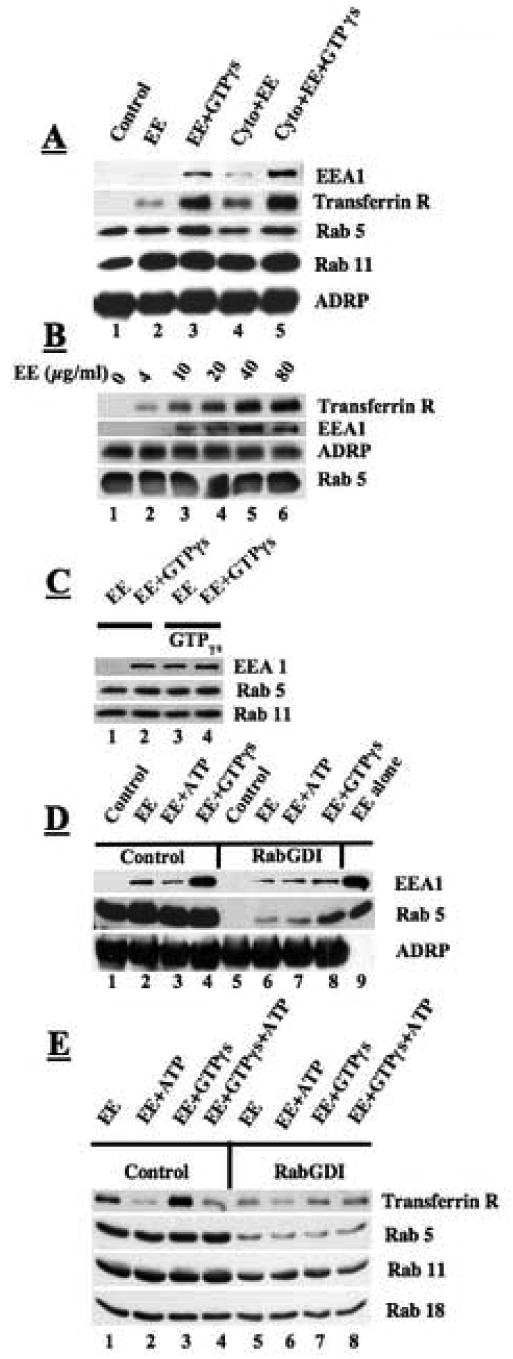Fig. 4.

GTP-dependent recruitment of early endosomes (EE) to droplets in vitro. Purified droplets (50 μl, ∼20 μg of protein/reaction) were incubated with EE (50 μl, 5 μg of protein/reaction) at 37°C for 1 hr in the presence or absence of 2 mM GTPγs, cytosol or ATP. At the end of the reaction, free EE was separated from bound EE by flotation of droplets, and the droplet fraction subsequently washed three times with buffer B by repeated centrifugation at 10,000 × g. Samples were processed for immunoblotting as described. A) GTPγs–dependent recruitment of EE to droplets does not require the presence of cytosol. B) EE recruitment to droplets is dependent on concentration of EE (50 μl of droplets, plus 2 mM GTPγs and the indicated amount of EE). All incubations were at 37°C for 1 hr. C) Pretreatment of droplets with GTPγs supports EE recruitment. D) The Rabs on the EE are sufficient to recruit EE to droplets. Droplets were treated with 10 μM RabGDI for 1 hr to remove Rabs. These droplets were then mixed with EE and incubated in the presence of the indicated nucleotide for 1 hr at 37°C. Lane 9 is a sample of EE (1.25 μg). E) Rabs are necessary for recruitment of EE. Both droplets and EE were treated to remove Rabs with RabGDI. These fractions were then mixed in the presence of the indicated nucleotide (2 mM) and incubated for 1 hr at 37°C.
